Many people question the purpose of using neuromodulators, or as we know them, Dysport/Xeomin/Botox. In their essence, all of them are neurotoxins that inhibit your nerves from communicating correctly, so why even do some people use them to improve their aesthetics?
What’s The Purpose Of Neuromodulators?
Clostridium botulinum, the bacterium that gives rise to all three effective treatments, is the source of Dysport/Xeomin/Botox. They are chemically produced in the form of botulinum toxin type A, the neurotoxin or paralyzing agent administered.
While each is a paralyzing agent, each has undergone a series of clinical tests and then been successfully enforced in various settings around the world—they are proven again and again not to cause any danger to your health. The outcome is virtually always the same: each injectable momentarily paralyzes particular muscle areas on the face, resulting in the face becoming more relaxed and wrinkles becoming less pronounced.
For a more dramatic facial rejuvenation, each of these treatments is frequently combined with dermal fillers such as Juvederm or Radiesse due to their demonstrated efficacy.
Best Applications For Neuromodulators
When it comes to lines on the face that aren’t caused by muscle movement, neuromodulators are not something that an experienced provider will recommend.
A neuromodulator such as Dysport/Xeomin/Botox will not be effective in treating wrinkles resulting from sun damage or sagging skin. After receiving an injection of a neuromodulator, the muscle will appear to be “frozen” or immobile. They will start to feel more relaxed after about a week, and the impacts can last for around three to four months.
Neuromodulators are relevant for reducing the impression of dynamic wrinkles such as crow’s feet (wrinkles that form roughly the outer corners of the eyes), reducing excessive sweating or oiliness, frown lines, and forehead folds.
What To Expect In A Neuromodulator Treatment
When you consult a qualified and experienced neuromodulator professional, they will review your medical history. They will discuss your expectations, potential risks, and outcomes of the procedure with you if you are in excellent overall physical, mental, and emotional wellbeing.
Your expectations will be discussed before the procedure. Often, a patient will be asked by their doctor if they have recently taken or are undergoing any blood-thinning drugs, over-the-counter prescription drugs, supplements, previous neuromodulator treatments, injectable antibiotics, or sleep medicine. While it may be a lot to discuss, this is essential since many medications can interact and cause adverse side effects.
Although neuromodulators do not typically cause pain, local anesthetic cream or an ice pack can help alleviate any discomfort that may be experienced. After the process, you may encounter slight discomfort, light bruising, headaches, or drooping eyelids, depending on your circumstances. It is essential to avoid rubbing or massaging the areas that have been treated, as this could cause the solution to spread further than the desired area.
What Are The Differences Between Dysport, Xeomin, And Botox?
Anti-aging benefits of Allergan’s Botox have been FDA approved since it was launched on the market more than ten years ago. Signs of aging can be dramatically reduced with Botox injections. Even to this day, millions still turn to Botox to reduce these signs of aging.
However, new competitors have popped up since. Dysport and Xeomin are two new companies that are doing well. Dysport’s introduction six years ago gave patients an alternative to neuromodulators. Dysport propagates more than Botox and is used by Botox-resistant patients. It’s injected differently and affects a wider area than Botox and Xeomin.
Also, Botox and Dysport contain an accessory protein (egg or lactose) to carry the botulinum toxin, so the body can construct an immune response over time, diminishing the results. Meanwhile, Merz’ Xeomin contains no attachable protein, making it a “pure” botulinum toxin that reduces allergic reactions and natural resistance. These single compounds allow further and faster migration to treat all facial areas. The absence of protein admixtures reduces allergy and rejection risks.
While Botox and Dysport contain added proteins, making them ‘heavier,’ these proteins protect botulinum and extend its life. Clinically, these barrier protection proteins may also safeguard the neurotoxin’s active part, reducing product effectiveness. Dysport is 1:3 to Botox so 20 units of Botox is 60 units of Dysport. The full onset for all neurotoxins is two weeks. This is when we would follow up and a touchup is necessary. Onset is faster with Dysport,
Which One Should You Pick?
Depending on the patient, the effects of any of the three neurotoxins currently on the market can stay anywhere from three to four months. It is said that it takes two to three days for the effects of the Dysport treatment to become visible after receiving the injection. When compared, the recovery time for Xeomin is five to six days, while it takes seven to ten days for Botox.
Patients start to develop a preference for which Botox, Dysport, or Xeomin injection treatment works best for them as time goes on and they receive multiple treatments. Consult with a provider who has a great deal of experience when making the preliminary choice of which neurotoxin to use. The techniques for administering Botox, Dysport, and Xeomin are distinct and skilled injection is required to determine the appropriate dosage and get the best possible results.
Even though our clinic, Spirited Aesthetics and Wellness, does not believe that one neurotoxin is advantageous to the other, we still make sure to provide a variety of options for all of our clients so that we can satisfy their specific individual requirements.
Takeaway
You can address certain signs of aging through these three neuromodulators without resorting to surgery. So if you are interested, do not hesitate to contact us and seek an appointment at Spirited Aesthetics and Wellness clinic anytime! We also present other services that address other aging and skin concerns.


